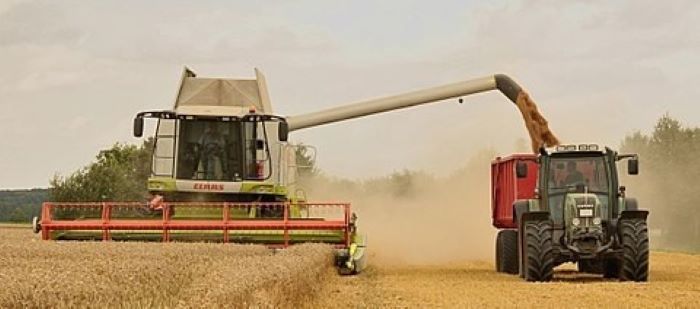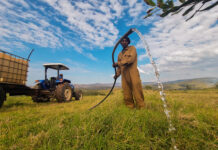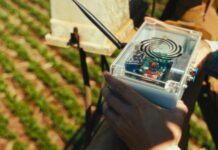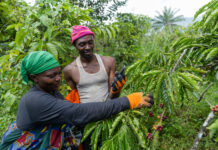THREE LEVELS OF AGRICULTURE
Export, and in very big countries (e.g., India and China) internal distribution to premium markets, is the fastest and most sustainable way to increase farmers’ income and influence the country’s economy.
In the face of limited resources (which is typical to any organization), the question is – how do we get there, how do we get to START exporting?
To be able to export, we need to acknowledge where we are today and what is our current status.
Today we can distinguish three “types” of agriculture:
A. Traditional Agriculture. Most of the African and Asian farmers belong to this category.
B. Industrial/Commercial Agriculture. This is where most of European and USA farmers are.
C. Export Agriculture. Only a small portion of the world’s farmers belong to that category; out of those even a smaller portion practices the international export of fresh produce. That – most rewarding in the long-run level – is the most difficult to achieve.
SUCCESS REQUIRES FOCUS
In many African and Asian countries over 50% of the labor force is working in agriculture.
No matter how much we want or need, it is not possible nor practical to shift IMMEDIATELY all African/Asian farmers from Traditional Agriculture to Export Agriculture, or even to Industrial Agriculture. Not a single country ever managed to do such a rapid shift.
Trying to achieve that Impossible Goal, of shifting ALL farmers, at the same time, may be part of the problem of the African and Asian countries.
So what should we do?
FOCUS.
First, we need to set expectations and have a clear view of our TARGETS in the face of reality.
Most nations wish to establish a better economy (also) through EXPORT. Good.
And if this country happens to have 50% of its population dealing with agriculture, then they may say “we are strong in agriculture. Let’s EXPORT what we grow“. It only makes sense.
Many decision-makers I have met conclude that more farmers equal to a stronger agri-sector.
But, is it so?
WATCH OUT FROM ASSUMPTIONS
We need to be careful with an assumption for it may lead us to victories, but even more often to… fatal failures.
Many high officials ask me to help them to create MORE jobs for more farmers. They do not ask me to help increase farmers’ income, just MORE JOBS.
So let’s challenge the assumption that More Farmers equals a stronger Agro-Industry and a stronger Economy.
WHAT IS THE DESIRED SHARE OF A SECTOR?
Should the shoemaker sector be 50% of the country’s workforce? Maybe more / maybe less? And what about the road construction sector, the lawyers the teachers, etc.
How do we know what is the ‘right’ size of a sector? How do we know if we are ‘out of balance’? How do we know what to aim for?
We do a ‘Reality Check’. That is, we look at what is happening in the present and past in similar cases, and hence draw conclusions about our current situation and what we need to do.
WHAT ABOUT THE AGRI-INDUSTRY?
Now, we can ask the necessary hard question – what should be the share of farmers in the National workforce?
Is it going to be 90%, or maybe 70%, 50%, 30%, 10%, 0.1%?
I am aware that this is an emotional challenge as much as it is an economic one.
We should ask additional disturbing questions, in case we don’t need all to continue farming –
* What will happen to the other farmers?
* How does the future ahead of them look?
These are fateful questions for every country. A mistake in judgment can cost the country the loss of income, unnecessary spending, and a delay in its economic development over several decades.
Is this situation unique in the history of humankind or can we get an answer, from our own history or other nations’ history?
THE TWO BIG QUESTIONS
What is the share of the working force in agriculture we can expect in our future?
What will the rest of the working force do?
THE HISTORY OF EMPLOYMENT OF HOMININS
Hominins are all species, including side-branches and extinct species, on the human line after our Last Common Ancestor (about 7 million years ago) with chimpanzees & bonobos.
In the evolution and long history of humans (and even earlier), we can identify periods according to the way we found our food and made our living and livelihood. 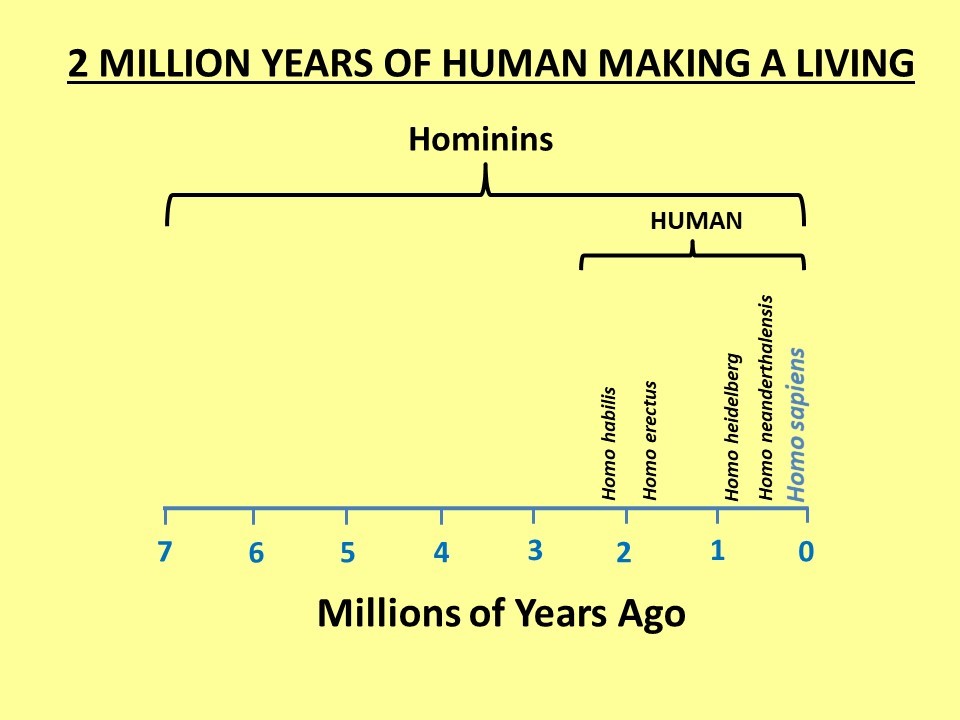
Hominins (Early) – a period of 7 to 2 million years ago. Hominins were much more similar to living apes than to living humans. Their way of getting food was opportunistic, and their diet was consisted almost entirely of plant foods (nature).
Note: Every individual in the population (100%) was responsible to reach its own food.

Hunters-gatherers – a period from about 2 million years ago to about 12,000 years ago. What began with the Homo erectus continued and perfected with the appearance of the Homo sapiens (which is ‘us’ today) some 200,000 years ago.
Hunting and gathering was humanity’s first and most successful adaptation, occupying at least 90% of human history (Wikipedia)
Note: Most of the members (about 90%) of the group worked to get the food. It required planning and later improved by specialization. As ‘specialization’ begun, fewer members of the group took part in getting the food. The way of Hunters-gatherers was so successful that Hominins who did not adapt to it became extinct:
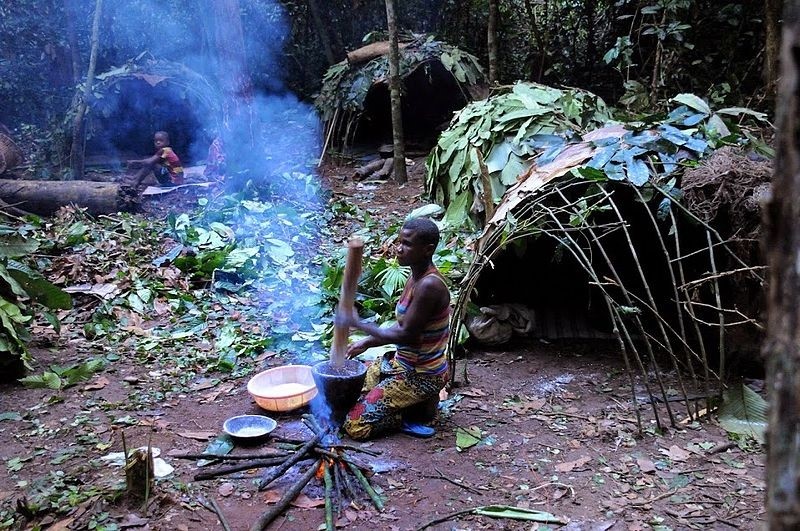
Agriculture – About 12,000 years ago, the (traditional) Agricultural Revolution / Neolithic Revolution began.”
Agriculture is the science and art of cultivating plants and livestock” (Wikipedia).

Following the invention of agriculture, hunter-gatherers who did not change have been displaced or conquered by farming or pastoralist groups in most parts of the world”(Wikipedia).
Note: For millennia, (traditional) agriculture has been the source of livelihoods for most of the world’s population, usually over 80% engaged in the field. Traditional Agriculture was so successful that even in 1500 the share of the labor force working in agriculture in West European countries was typically 55% to 80%. Hunters-gatherers groups that did not fit, couldn’t compete with the Agricultural success and disappeared.
The Industrial Revolution – started about 250 years ago, and with it came the Agri-Industrial revolution. The Industrial Revolution is the transition to new manufacturing processes (Wikipedia).
As a result, in developed countries, Agriculture became an Agri-industry that competes with other industries. Its economic performance is measured by similar tools and methods.
Note: The Industrial Revolution is so successful that it oppresses the livelihoods of those who try to continue to earn a living through Traditional Agriculture and leaves room only for Industrial / Advanced Agriculture.
The current share of the labor force working in agriculture in European countries is typically 1% to 10%. Note that in Israel where agriculture is very progressive, this number is as small as 0.1% out of its population.
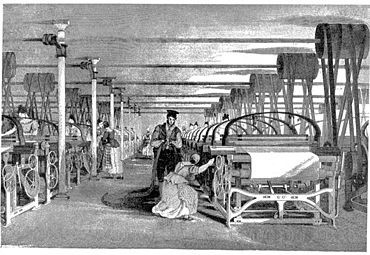
The Information and Services Revolution – This revolution began less than 100 years ago and is the most significant in driving the changes we are experiencing today.
Note: In the developed countries, about 90% of the workforce deals with areas related to industry, services or information, but not agriculture. Any country that wishes to compete with developed countries should consider that it cannot keep a high share of its population working in agriculture. Furthermore, ‘farmers’ in developed countries are practically businesspeople (agri-industry) dealing with Industrial Agriculture.
| As Hunters-gatherers appeared, the less organized and more opportunist species of Hominins disappeared. It happened not because Hunters-gatherers is the best way of making a living, but because all other ways, at the time, were inferior. Then Humans developed Agriculture. Now it was time for the Hunters-gatherers, who were not able to adapt fast enough to the new way of making a living, to disappear. Then the Industrial Revolution arrived, which also revolutionized the Agriculture into Agri-industry. Peoples who could not adapt fast enough were left behind. As we speak, we are experiencing the Information and Services Revolution. We can only expect that Peoples who will not change fast enough will, once again, be left behind. TRENDS IN LONG-TERM HISTORY OF MAKING A LIVING (IMPOLYMENT) The Human race has experienced several revolutions that affected the way Humans are making a living and the world of employment. We can learn from our long-term history that revolutions that made us change our way of making a living are not the exception, but the norm. We see that Economic Revolutions take place when the new way of making a living is so overwhelming that one can either join it or risk the danger of extinction. We see that never in history the wheel turned back; Hunters-gatherers did not go back to become Opportunist. Farmers did not go back to become Hunters-gatherers. Industrialists/High-techies did not go back to become Farmers. We see that every revolution brings a dramatic drop in the percentage of employed in jobs related to the previous situation, created by the previous revolution. CONCLUSIONS FOR THE AGRI-SECTOR The lesson we learn from 7 million years of evolution and human history is that – there is no going back. Individuals, tribes, and nations change not because they want, or because it is easy, but because they have no other choice! Those who do not change, risk extinction. Once a new better way of Making A Living appears, eventually, the entire population embraces it. Deciding NOT to embrace it means doing much less good from an economic point of view, but more importantly, it means to be controlled and (later) oppressed by others who will take advantage of your ‘weakness’. What about agriculture and farmers? The Industrial and Information/Services Revolutions have dramatically changed the Agricultural sector. Agriculture has become a High-Tech Agri-industry, which is heavily dependent on Information and innovative technology. We conclude that decision-makers should not try to keep the number of farmers as it is today, and obviously not to make efforts to increase it. Keeping 50% of the population Farmers makes sense as much as keeping 50% of the population Hunters-gatherers. In both cases, it doesn’t make sense. As we are deep into the Agri-Industrial Revolution and the Information-Services Revolution we should prepare long-term plans to transform our Nations in this direction. Twenty percent (20%) of the workforce making a living from agriculture is already a lot and points on structural changes that need to be done. In economically advanced countries, the number of farmers should not and will not excide 2%. A link to Chapter 36 of The Agricultural Gap video series is available now > The Macro History of Making A Living < |
| Please let me know if you found this article interesting and valuable 🙂 I would love to hear your opinion – email nisraely@biofeed.co.il or text me by WhatsApp +972-5423425. |


